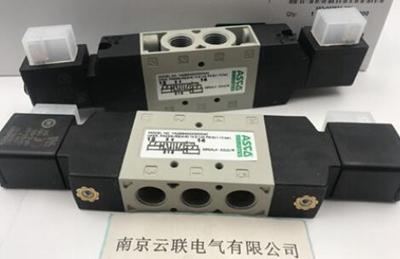
Telephone
025-52791167,52791168
13390905858
13390905858

How to inspect, repair, and maintain ASCO solenoid valves?
Cleaning requirements
Regularly keep the external and moving parts of the solenoid valve clean to protect the integrity of the solenoid valve paint. The dust on the solenoid valve is blown away with compressed air, and the remaining oil and medium on the solenoid valve are blown away with steam. The drain valve should be regularly disassembled and flushed to prevent blockage.
Regular lubrication
The trapezoidal threads, nuts, engagement parts, and matching moving parts of the solenoid valve should be regularly lubricated to prevent rust and jamming. Exposed lubricating parts, such as threads, should be lubricated with molybdenum disulfide, which not only does not pollute dust but also provides good lubrication; For plug valves, lubricating oil should be added regularly to prevent wear and leakage.
Regular maintenance
The valve body should be intact, and the valve components should be complete and intact. The threads and nuts should be tightened to prevent loosening. The packing pressure components should be tightened in a timely manner, and missing parts should be replaced in a timely manner. Complete. In addition, it is not allowed to knock, place heavy objects, or stand on the solenoid valve to avoid damaging it.
Flexible driving device
The driving device should be clean on the outside; Sealed well, the sealing area should be tight without leakage; The transmission parts should be lubricated regularly to prevent rusting or jamming; Ensure that the driving device operates smoothly and accurately without errors.
Handling common problems with solenoid valves
In actual production equipment, the leakage of electromagnetic valves generally includes the following situations: medium leakage caused by valve plate deformation, which is in the form of seepage or small flow continuous discharge;
There are debris inside the valve body, and the medium leakage caused by poor closure often results in small flow leakage; The leakage of media caused by inadequate sealing due to sealing surface operation often results in leakage like leakage;
The medium leakage caused by the stuck valve stem causing the electromagnetic valve to be unable to close often results in a considerable degree of leakage and pollution within a certain period of time;
The medium leakage caused by loose sealing packing is generally manifested as leakage, but the amount is relatively small; The medium leakage caused by sand holes in the valve body is generally manifested as leakage, with a small amount; The electromagnetic valve leakage caused by manufacturing process problems is mostly leakage type.
Of course, it is necessary to accurately determine the location and cause of gate valve leakage, timely and effectively eliminate faults, and conduct comprehensive analysis and research based on specific situations, adopting reliable and rapid methods to eliminate faults, so as to maintain the electromagnetic valve in good technical condition.
Maintenance and inspection of solenoid valves
The main problems in this regard include: untimely maintenance and repair of solenoid valves, resulting in solenoid valve disrepair, leakage, or ineffective opening and closing; The electromagnetic valve was not regularly maintained and pressure tested, and even used for many years without cleaning, pressure testing, and technical evaluation, resulting in debris settling inside the valve, not closing tightly, and serious oil leakage and channeling; Failure to close the solenoid valve after maintenance, or failure to seal the pipe opening after removing the solenoid valve; The electromagnetic valve dust gasket uses materials that are not resistant to oil or pressure. Therefore, it is necessary to strengthen the inspection of solenoid valves and strive to prevent problems before they occur.
The main contents of the monthly inspection of solenoid valves are:
Whether there is leakage at the dynamic seal of the valve stem and the static seal of the flange gasket; Whether the opening and closing status is normal yunlian dianqi njxj888@163.com;
Check for any abnormal phenomena such as damage and leakage in the valve body;
Rotate the normally open or normally closed solenoid valve 1-2 turns or perform 1
telephone:025-52791167,52791168
Fax:025-52791169
Phone :13390905858
mailbox:njxj888@163.com skype:yluedq
Address:Jiangning Shuanglong Avenue No.1222 Nanjing, Jiangsu. China P.O. 211100